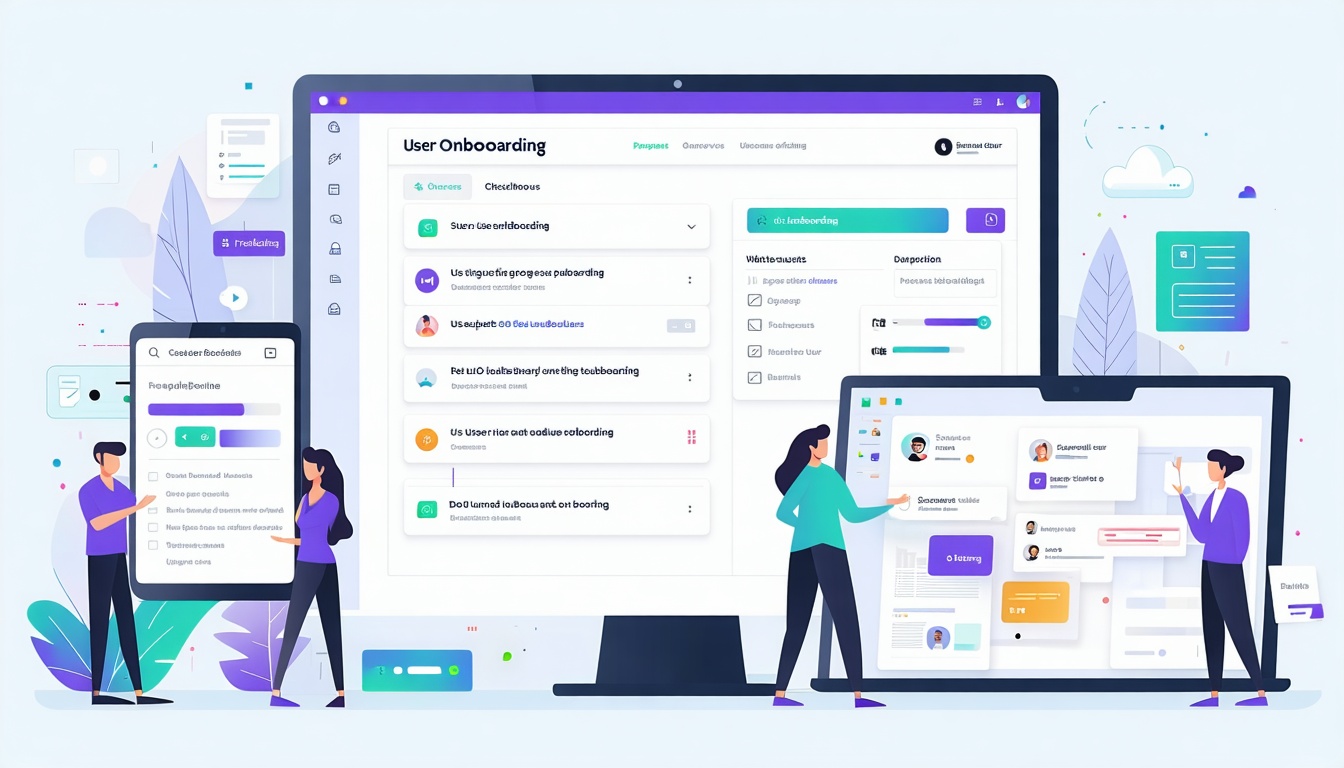Introduction to Web Development Project Management
In the realm of web development, effective project management plays a pivotal role in ensuring the successful execution of projects. From defining project goals to monitoring progress, project management is the backbone that keeps web development initiatives on track. Let’s delve into the importance of effective project management in web development and explore the key components that drive successful project outcomes.
Importance of Effective Project Management in Web Development
Effective project management in web development is essential for streamlining processes, optimizing resources, and delivering projects within set timelines and budgets. By implementing sound project management practices, businesses can improve collaboration among team members, enhance communication channels, and ultimately achieve project objectives efficiently.
A structured project management approach not only helps in organizing tasks but also mitigates risks, identifies potential bottlenecks early on, and fosters a proactive problem-solving environment. Moreover, effective project management contributes to client satisfaction by ensuring project deliverables align with their expectations and requirements.
Key Components of Web Development Project Management
Successful web development project management hinges on several key components that guide project teams throughout the project lifecycle. From setting clear project goals to providing post-launch support, each component plays a crucial role in ensuring project success. Let’s explore some of the key components of web development project management:
| Component | Description |
|---|---|
| Defining Project Goals and Objectives | Establishing clear and measurable project goals that align with the client’s vision and business objectives. |
| Establishing Project Scope and Timeline | Defining the boundaries of the project scope, outlining deliverables, and setting realistic timelines for project completion. |
| Identifying Key Stakeholders and Team Members | Identifying stakeholders involved in the project and assembling a skilled team with defined roles and responsibilities. |
| Assigning Roles and Responsibilities | Clearly defining roles and responsibilities within the project team to ensure accountability and effective coordination. |
| Creating a Detailed Project Plan | Developing a comprehensive project plan that outlines tasks, milestones, timelines, dependencies, and resource allocation. |
| Monitoring Progress and Adapting to Changes | Continuously monitoring project progress, tracking key metrics, and adapting to changes or challenges proactively to maintain project momentum. |
By paying close attention to these key components, businesses can navigate the complexities of web development projects with confidence and efficiency, ultimately delivering successful outcomes that meet client expectations and project requirements.
Setting the Foundation
Before diving into the actual development process, it’s crucial to establish a solid foundation for your web development project. This foundation involves defining clear project goals and objectives, as well as establishing a well-defined project scope and timeline.
Defining Project Goals and Objectives
Setting specific and achievable project goals and objectives is the cornerstone of successful web development project management. These goals serve as the guiding light that aligns the project team and stakeholders toward a common vision. By clearly outlining what the project aims to achieve, you create a roadmap that helps track progress and measure success.
When defining project goals and objectives, consider the following elements:
- Specificity: Ensure that goals are clear, measurable, and attainable.
- Relevance: Align goals with the overall business objectives and target audience needs.
- Timeline: Establish a realistic timeframe for achieving each goal.
- Measurable Outcomes: Define key performance indicators (KPIs) to track progress and evaluate success.
Establishing Project Scope and Timeline
Once the goals and objectives are defined, it’s essential to establish the project scope and timeline. The project scope outlines the deliverables, features, functions, and tasks that will be included in the web development project. By clearly defining the scope, you set boundaries that prevent scope creep and ensure the project stays on track.
Additionally, creating a realistic project timeline is vital for effective project management. The timeline should outline key milestones, deadlines, and dependencies to give a clear overview of the project’s progress. By breaking down the project into manageable phases with specific timelines, you can effectively track progress and make adjustments as needed.
It’s important to communicate the project scope and timeline to all stakeholders and team members to ensure everyone is aligned on project expectations. Regularly revisiting and updating the scope and timeline as the project progresses enables you to adapt to changes and challenges efficiently.
Establishing a strong foundation by defining clear goals, objectives, project scope, and timeline lays the groundwork for a successful web development project. By setting the right direction from the start, you pave the way for effective collaboration, efficient execution, and ultimately, the successful completion of your web development endeavor.
Building the Team
To ensure a successful web development project, assembling the right team is crucial. In this phase, the focus is on identifying key stakeholders and team members, as well as assigning clear roles and responsibilities.
Identifying Key Stakeholders and Team Members
Key stakeholders play a vital role in the web development project as they are typically individuals or groups with a vested interest in the project’s success. These can include clients, end-users, project sponsors, and other relevant parties. By engaging key stakeholders from the outset, you can align project goals with their expectations and requirements.
It’s important to create a stakeholder list that outlines each stakeholder’s role, level of involvement, and communication preferences. Effective communication with stakeholders throughout the project lifecycle helps in maintaining transparency and managing expectations.
Assigning Roles and Responsibilities
Assigning roles and responsibilities is essential for streamlining the project workflow and ensuring accountability. Each team member should have a clearly defined role that aligns with their skills and expertise. Here is a basic example of roles and responsibilities within a web development team:
| Role | Responsibilities |
|---|---|
| Project Manager | – Oversee the entire project |
| Web Developer | – Code and design the website |
| UX Designer | – Create user experience designs |
| QA Tester | – Test the functionality and usability |
| Content Writer | – Develop relevant content for the website |
| SEO Specialist | – Implement SEO strategies for better visibility |
By clearly delineating roles and responsibilities, team members know what is expected of them, which helps in avoiding confusion and delays. A well-defined team structure contributes to the overall efficiency and success of the web development project.
As you move forward with building the team, remember to refer back to the project goals and objectives outlined in the earlier phase. Effective teamwork, communication, and collaboration are essential components of a successful web development project. Each member’s contribution plays a crucial role in bringing the project to fruition within the established scope and timeline.
Executing the Project
As the web development project moves into the execution phase, two critical aspects come into play: creating a detailed project plan and monitoring progress while adapting to changes.
Creating a Detailed Project Plan
A comprehensive project plan serves as the roadmap for the entire web development project. This plan outlines the project’s scope, timeline, milestones, tasks, and resources required for successful execution. By creating a detailed project plan, project managers can ensure that all team members are aligned on the project objectives and deliverables. This plan acts as a guide to keep the project on track and facilitates effective communication among team members.
The project plan typically includes the following components:
| Project Component | Details |
|---|---|
| Project Scope and Objectives | Clearly defines what the project aims to achieve and the deliverables. |
| Timeline and Milestones | Establishes key project milestones and their corresponding timelines. |
| Tasks and Assignments | Breaks down the project into individual tasks and assigns responsibilities. |
| Resource Allocation | Identifies the resources required for each task and allocates them effectively. |
| Risk Management | Addresses potential risks and mitigation strategies to minimize disruptions. |
By outlining these elements in a structured project plan, project managers can streamline the execution process and mitigate potential challenges that may arise during the course of the project.
Monitoring Progress and Adapting to Changes
Monitoring progress and adapting to changes are integral parts of successful project execution in web development. Project managers need to stay vigilant and regularly track the project’s progress against the established timelines and milestones. By continuously monitoring the project, they can identify any deviations or delays early on and take corrective actions to ensure that the project stays on course.
Key steps involved in monitoring progress and adapting to changes include:
- Regular Status Updates: Conduct periodic status updates with the project team to review progress, address challenges, and realign objectives if needed.
- Tracking Key Performance Indicators (KPIs): Monitor relevant KPIs to gauge project performance, such as completion rates, velocity, and adherence to timelines.
- Adapting to Changes: Be prepared to adapt to changes and unforeseen circumstances by revisiting the project plan, adjusting timelines, reallocating resources, or revising objectives as necessary.
By maintaining a proactive approach to monitoring progress and embracing flexibility in adapting to changes, project managers can navigate the intricacies of web development projects effectively, ensuring successful project execution and delivery.
Quality Assurance and Testing
When it comes to web development projects, quality assurance (QA) and testing play a vital role in ensuring the final product meets the desired standards. This section will delve into the significance of testing in web development and the implementation of quality assurance processes to deliver a successful project.
Importance of Testing in Web Development
Testing serves as a critical phase in the web development process, ensuring that the website or application functions as intended and provides a seamless user experience. By conducting thorough testing, developers can identify and rectify issues, bugs, and inconsistencies before the product is launched. This proactive approach not only enhances the overall quality of the project but also reduces the likelihood of post-launch setbacks that could harm the user experience and brand reputation.
Effective testing encompasses various aspects, including functionality, usability, performance, security, and compatibility. Each type of testing serves a specific purpose in evaluating different elements of the web development project, ultimately contributing to a polished and reliable end product.
Implementing Quality Assurance Processes
Incorporating quality assurance processes into the web development project is essential for maintaining consistency and adherence to best practices. Quality assurance focuses on preventing errors, defects, and deviations from the project requirements by establishing standards and protocols that guide the development team throughout the project lifecycle.
Quality assurance processes involve a structured approach to planning, executing, and monitoring the project to ensure that the deliverables meet the predetermined criteria for quality. By implementing quality assurance measures early in the project, potential issues can be addressed swiftly, leading to improved efficiency, minimized rework, and enhanced client satisfaction.
To further enhance the quality assurance process, regular testing cycles should be conducted to validate the functionality, usability, and performance of the project components. This iterative approach allows for continuous improvement and refinement, leading to a robust final product that aligns with the project goals and client expectations.
By prioritizing testing and quality assurance in web development project management, businesses can mitigate risks, optimize performance, and deliver solutions that resonate with their target audience. Embracing a systematic approach to testing and quality assurance not only fosters a culture of excellence within the development team but also establishes a foundation for long-term success in the digital realm.
Launch and Post-Launch Activities
As a critical phase in the web development project lifecycle, the launch and post-launch activities play a pivotal role in ensuring the success and sustainability of the project. This stage encompasses finalizing the project and providing post-launch support and maintenance for ongoing optimization.
Finalizing the Project
To successfully finalize a web development project, it is essential to conduct a comprehensive review and assessment of all deliverables to ensure they align with the project goals and client expectations. This includes reviewing the website design, functionality, content, and overall user experience. Any remaining issues or discrepancies should be addressed and resolved promptly to guarantee a smooth transition to the post-launch phase.
During the finalization stage, it is crucial to verify that all project requirements have been met and that the website is ready for deployment. Conducting thorough testing and quality assurance checks can help identify any last-minute issues and ensure the website performs optimally across various devices and browsers. Additionally, obtaining client feedback and approval signifies the completion of the project and sets the stage for a successful launch.
Post-Launch Support and Maintenance
Following the launch of a website, post-launch support and maintenance are vital to sustain its performance, functionality, and relevance over time. This phase involves ongoing monitoring, updates, and enhancements to address any emerging issues and optimize the website for continued success.
Post-launch support includes providing technical assistance, addressing user inquiries, and resolving any performance issues that may arise post-deployment. Regular maintenance activities, such as software updates, security patches, and content revisions, are essential to ensure the website remains secure, up-to-date, and user-friendly.
In addition to technical maintenance, post-launch activities should focus on continuous improvement and optimization to enhance the website’s performance and user experience. This may involve implementing analytics tracking, conducting user testing, and refining the website based on user feedback and data insights.
By prioritizing post-launch support and maintenance, businesses can maximize the value of their web development projects and ensure long-term success in the digital landscape. Investing in ongoing optimization and carefully managing the post-launch phase are key strategies for evolving and adapting to the dynamic challenges and opportunities of web development.
For more insights on efficient project planning, refer to our article on web development project planning.











